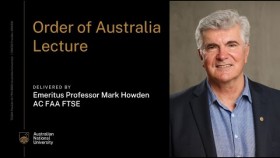Australia loses vital rain as climate change shifts winds
Human-caused climate change is robbing crucial rain from southern parts of Australia by shifting Southern Ocean westerly winds towards Antarctica, according to a new study.
Lead Australian researcher Associate Professor Nerilie Abram, from The Australian National University (ANU), said the loss of rain combined with 2016 being on track to smash the hottest-year record was ominous for communities and the environment.
"Our findings confirm that climate change is already having an impact on parts of Australia," said Dr Abram from the Research School of Earth Sciences and ARC Centre of Excellence for Climate System Science at ANU.
"Antarctica and the Southern Ocean are remote but this region influences Australia's heat waves, affects whether our crops get the winter rainfall they need and determines how quickly our ocean levels rise."
Winter rainfall in southwest Australia has declined by more than 20 per cent since the 1970s because of the shifting westerly rain belt, and Perth now relies on a desalination plant to supplement its water supplies.
Dr Abram said the southward shifts in westerly winds that circled the Southern Ocean over recent decades were clearly responding to anthropogenic climate change - primarily from rising greenhouse gases and ozone depletion.
The research, which involved ANU and 16 other institutions from around the world, is published in Nature Climate Change.
While the findings showed climate change was causing westerlies in the Southern Ocean to shift closer to Antarctica, the study found the bigger picture of the region's climate trends remained unclear, Dr Abram said.
"Antarctica and the Southern Ocean experience extreme fluctuations in climate year to year.
"In most cases our short climate measurements in this remote region are not yet long enough for the signal of anthropogenic climate change to be clearly separated from this large natural variability."
Measuring the surface climate across Antarctica and the surrounding Southern Ocean only became possible with the advent of regular satellite observations in 1979.
The research team investigated how recent Antarctic climate trends compared to past climate fluctuations using natural archives such as ice cores drilled into the Antarctic ice sheet. They also studied how Antarctica's recent climate changes compared with climate model simulations, including future climate-change scenarios.
Lead author Dr Julie Jones, from the University of Sheffield in the United Kingdom, said the Antarctic climate was like a giant jigsaw puzzle with most of the pieces still missing.
"At face value, many of the climate trends in Antarctica seem counter-intuitive for a warming world," said Dr Jones from the Department of Geography at Sheffield.
"Scientists have good theories for why, but these ideas are still difficult to prove with the short records we are working with."
Co-researcher Professor Matthew England from the University of New South Wales (UNSW) said scientists still had much to learn about the climate system of Antarctica and the region, and how it would affect people and the environment.
"Continued climate measurements and modeling in the Antarctic and Southern Ocean are critical to understanding how changes in the region will impact Australia's climate," said Professor England from the ARC Centre of Excellence for Climate System Science at UNSW.
ANU collaborated on this study with Sheffield in the UK, UNSW, Antarctic Climate and Ecosystems Cooperative Research Centre in Tasmania and 13 other institutes from the United States, Argentina, New Zealand, UK, Belgium, France and Italy.
The ARC Centre of Excellence for Climate System Science, which is a consortium of five Australian Universities with national and international partners, supported the study.











